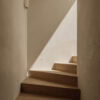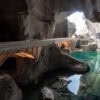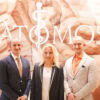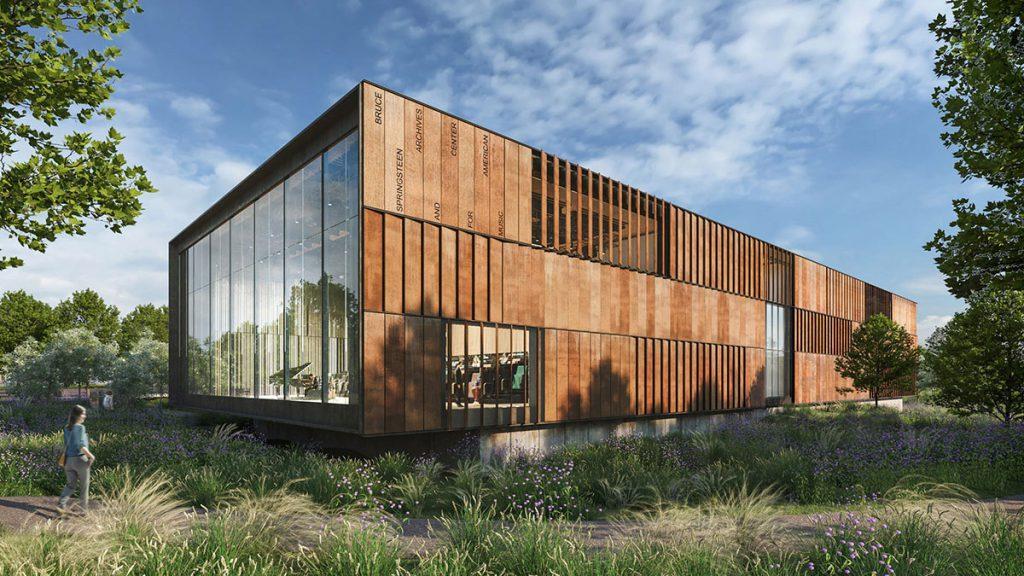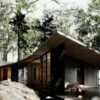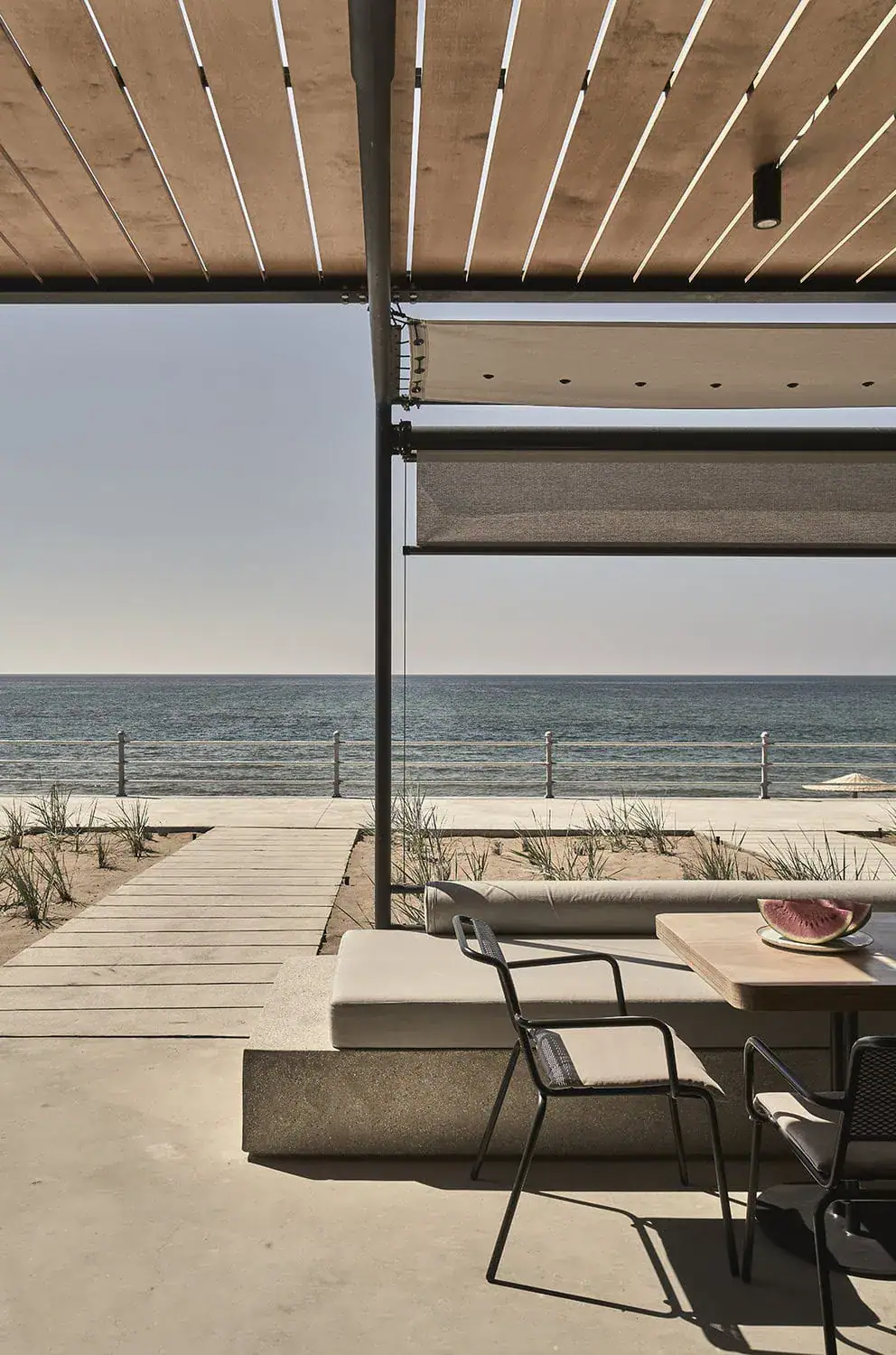A wooden museum dedicated to the musician Bruce Springsteen is being built in New Jersey. In keeping with the style of the working-class poet, it will be a rusty container in a wasteland.
Music history was written in a small house in West Long Branch, New Jersey, in the 1970s. The young Bruce Springsteen rented a room here in 1974 and composed all the songs on the album “Born to Run” on a piano in a month-long retreat. This was his breakthrough in the USA in 1975 and the “Times” praised him on the cover as “the new sensation of rock”. 50 years later, a museum is now being built on the campus of Monmouth University, not far from Springsteen’s former home: the Bruce Springsteen Archives and Centre for American Music (BSACAM).
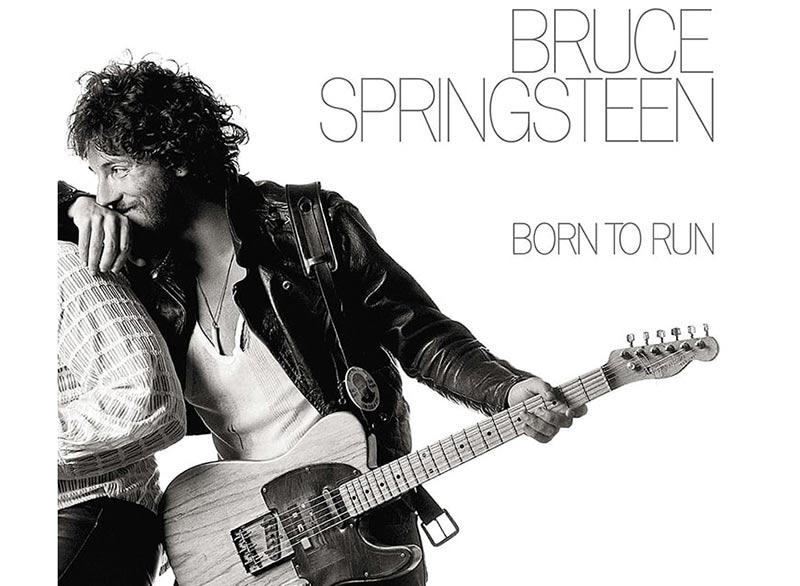
The rock legend’s musical and biographical archive, which was previously housed at the university, will have its own building on campus. In addition to Springsteen’s work and his E Street Band, the new museum will also highlight “the history of American music and its diversity of artists and genres”. In addition to the gallery spaces, the new building will also include a concert hall.
Down-to-earth and authentic
The design comes from the New York architecture firm CookFox, which describes itself as being committed to “integrative, environmentally orientated architecture”. In line with their approach, the museum is being built in timber. “The structural timber construction reduces the CO2 emissions of the building materials and at the same time emphasises the warmth and comfort that many associate with the music of Bruce Springsteen,” the architects explain in a press release.
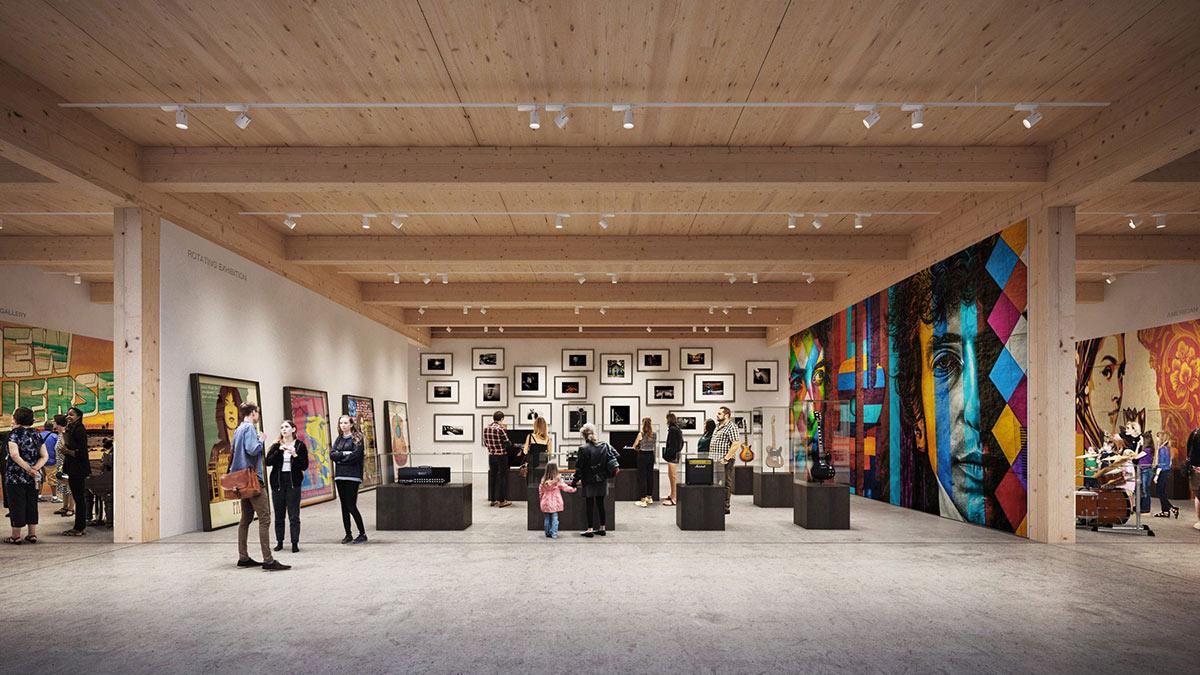
The timber construction reduces the CO2 emissions of the building materials and at the same time emphasises the warmth and cosiness that many associate with Bruce Springsteen’s music.
CookFox Architects, Architekturbüro
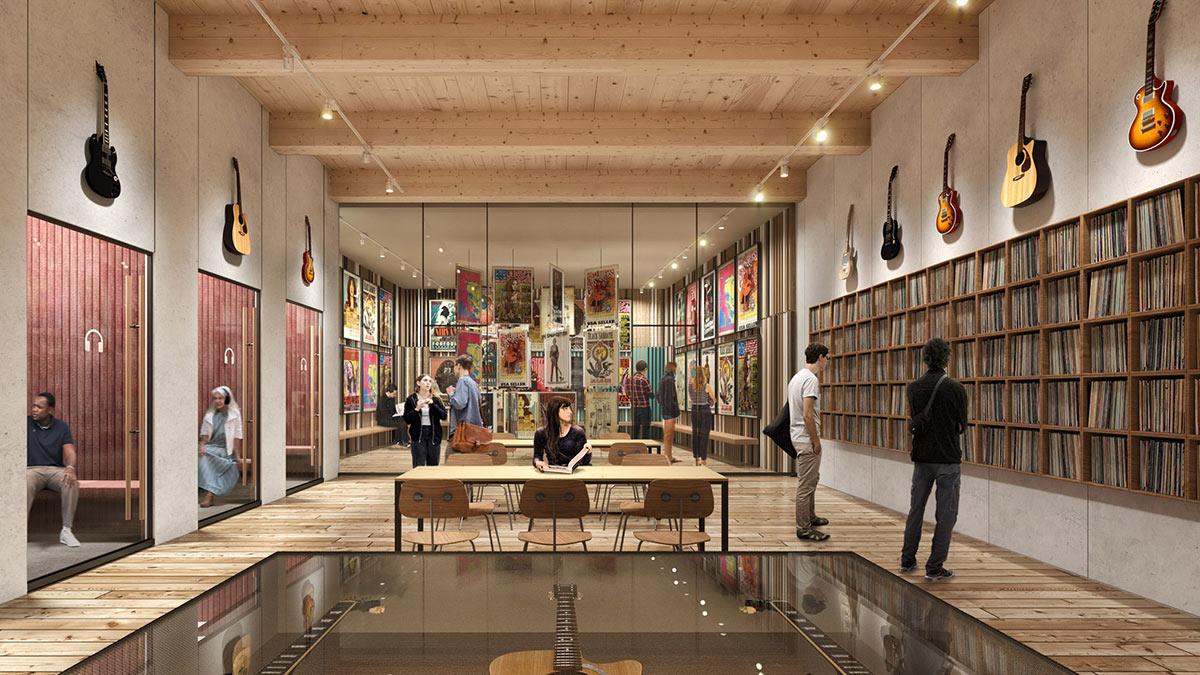
“The Boss”, as Springsteen is also known, became world-famous with his blue-collar hits. His background from a religious working-class family had a strong influence on him, and music provided him with a means of breaking out of his cramped circumstances. Even though he has never seen the inside of the factories he writes about, his songs accurately portray the life and feelings of the “little man” and take an unvarnished look into the soul of America.
No glamour
The architecture dedicated to his life and his music should be just as down-to-earth and authentic as he himself. No ornamentation, no pomp, no frippery. Nothing that puts a transfiguring glamour on things. Rather, it should be a place that matches the poetic realism of his song lyrics. A place that resonates with verses like these: “Through the mansions of fear, through the mansions of pain, I see my daddy walking through them factory gates in the rain” (from the song “Factory”).
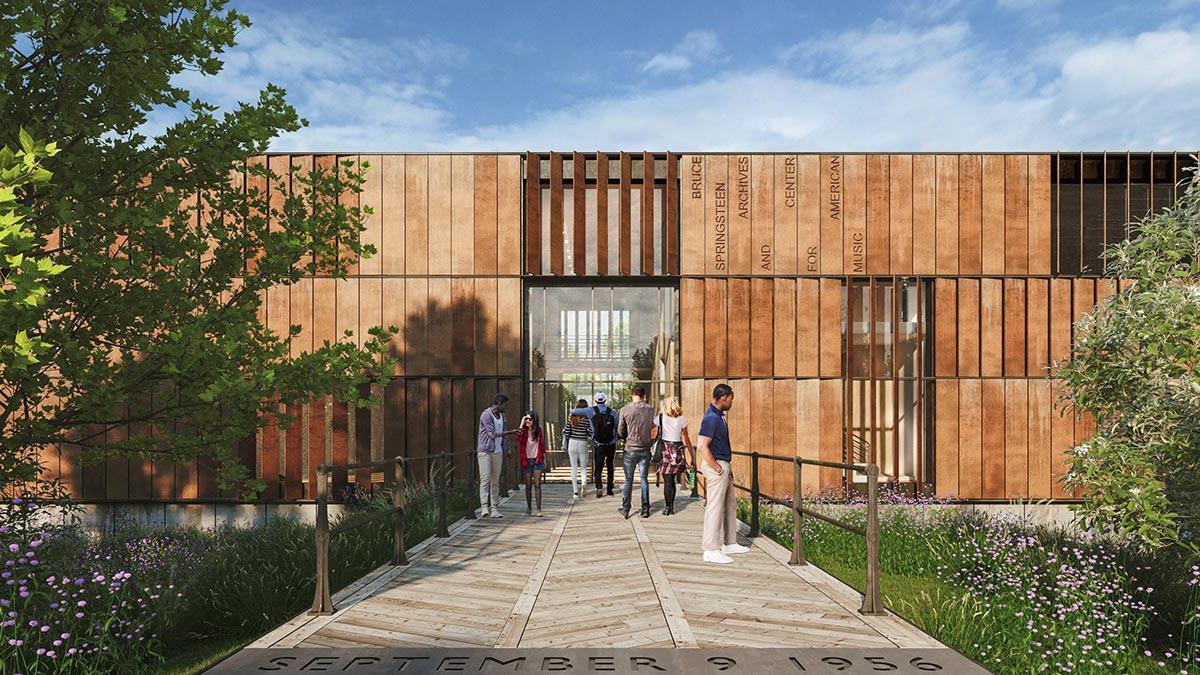
The rusty layer of Corten steel on the façade reflects this, as does the container-like cubature of the block. Both are inspired by New Jersey’s industrial heritage, which was largely characterised by shipbuilding and the steel industry. The vertical steel louvres can be rotated and thus regulate the amount of light entering the rooms behind them.
Rusty container on wasteland
A wooden walkway leading to the entrance of the museum echoes the promenades typical of the state’s coastline, as can be seen in the project description. It leads over a soft, undulating bed of grasses, inspired by the coastal landscape for which New Jersey is so well known. The design of the outdoor area, which was created in collaboration with Laguardia Design Group, is intended to increase regional biodiversity and also provide protection against flooding.
The storytelling that underpins both Springsteen’s music and the creation of his archives will be brought to life in the built environment of BSACAM.
CookFox Architects, Architekturbüro
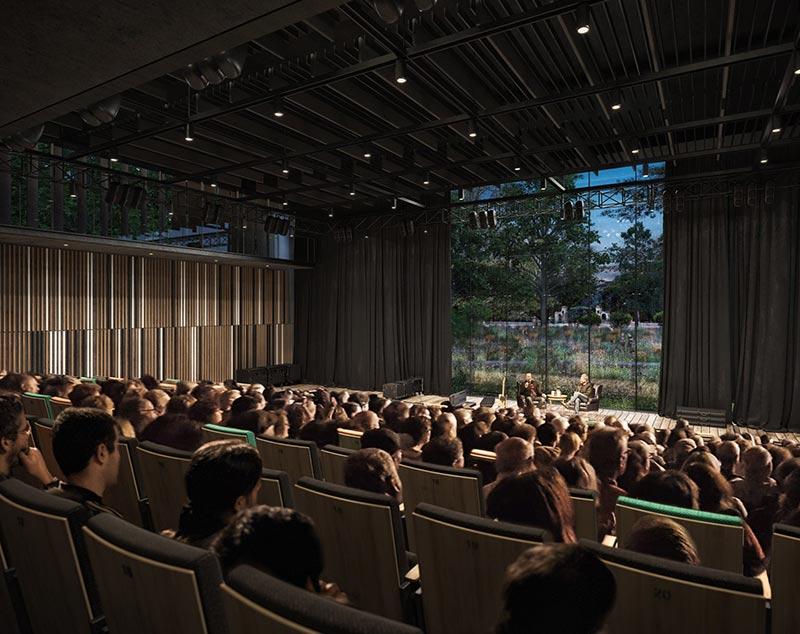
Instead of a polished park, the planting looks more like natural wasteland, as you might find on the side of a motorway. An oversized, rusty container is parked right in the middle. A sculpture that tells its own, somewhat wistful story. “The storytelling that underlies both Springsteen’s music and the creation of his archives can be experienced in the built environment of BSACAM,” explain the architects from CookFox.
As can be seen in the visualisations, the rectangular cube has large glass façades at both ends, while smaller windows are distributed along the long sides. The high walls inside are adorned with numerous guitars and an extensive vinyl collection. In total, the collection consists of around 48,000 items from 47 countries, including newspaper articles, oral histories and special concert memorabilia. For die-hard fans of the musician, the opening of the museum, which is planned for 2026, marks the start of special times, presumably glory days.
Text: Gertraud Gerst
Visualisierungen: CookFox Architects


